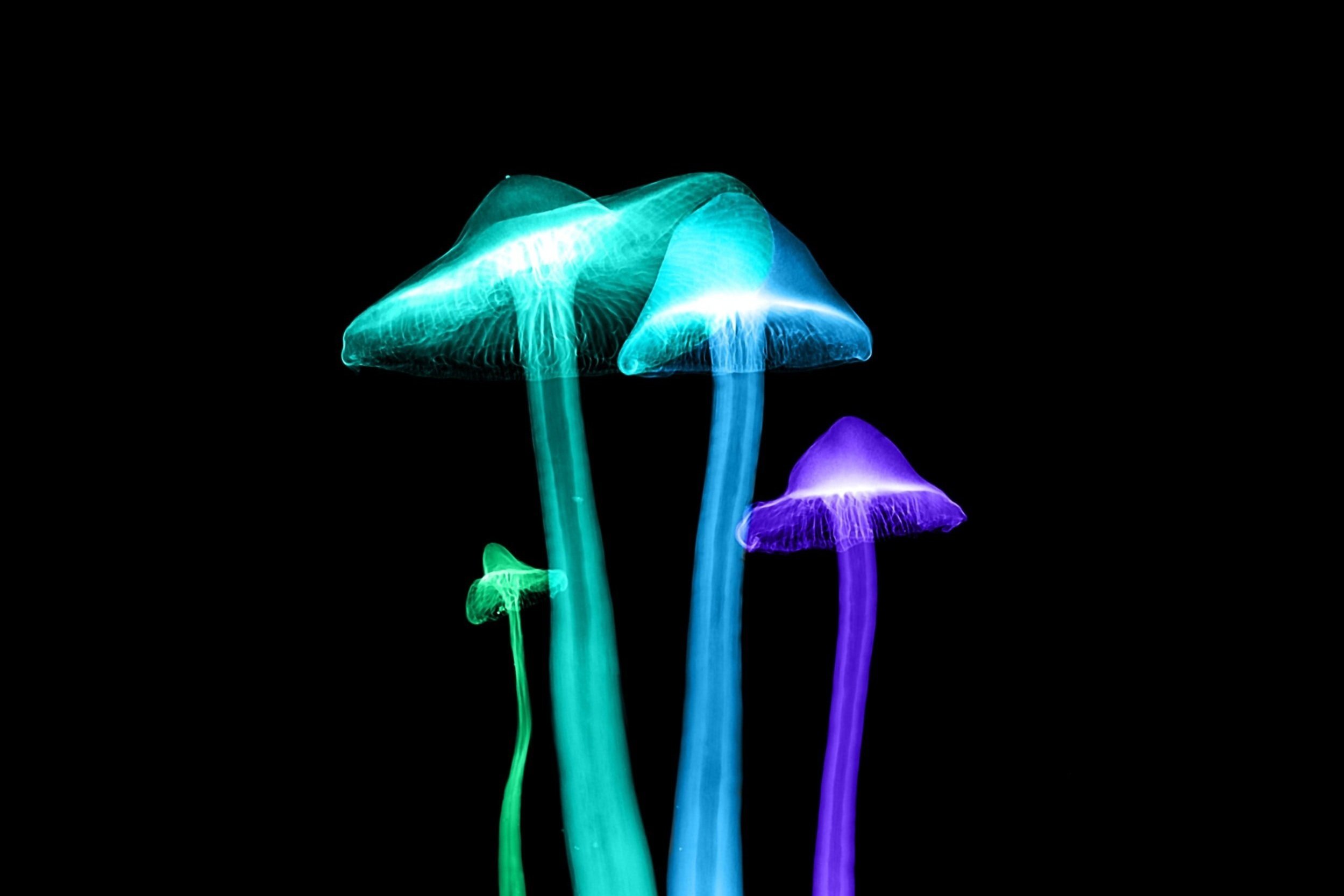What You Need to Know About Psilocybin
By now you’ve undoubtedly heard about the resurgence of psilocybin, or magic mushrooms. Once associated with Woodstock and tie-dye, the drug is coming back into the spotlight as a therapy for depression, anxiety, OCD, addiction, and other mental disorders.
For history’s sake, I was curious about what qualifies psilocybin as a psychedelic and how that class of drugs even came into being. The term “psychedelic” is derived from the Greek words for “psyche” (which means soul or mind) and “deloun” (which means to manifest). So it actually means “mind manifesting.” The word was first used by British psychiatrist Humphry Osmond in 1957 to describe a class of hallucinogenic drugs that trigger non-ordinary mental experiences or an apparent expansion of consciousness. These drugs include not only psilocybin, but also LSD, mescaline, ayahuasca, ketamine, and MDMA.
The therapeutic use of psilocybin was first studied in the 1950s and ‘60s, most famously by Timothy Leary and Richard Alpert through the Harvard Psilocybin Project. In 1968, the possession of psychedelics was criminalized by the US federal government, which some argue was a reaction against a widespread counter-culture movement. The criminalization of these drugs halted all research of the therapeutic uses of psychedelics for decades.
Psilocybin research started up again in the 1990s, albeit hampered by strict regulations, and has increased particularly since 2006, when a landmark study from Johns Hopkins (Griffiths et al., 2006) showed that a one-time dose of psilocybin improved the lives of 64% of patients who took it for up to 14 months after the therapy.
Psilocybin is a naturally occurring substance found in more than 200 species of fungi. When consumed (usually by eating or drinking as a tea), it is metabolized to the substance psilocin, which is the chemical with the psychoactive properties. It works by binding to the serotonin receptor 2a. This is a different receptor than the most widely prescribed antidepressants, (SSRIs like Prozac and Zoloft), target.
Psilocybin is thought to affect the parts of the brain responsible for our “default mode network” (or our habitual patters of thinking and behavior) as well as our emotional centers. According to fMRI brain scans, psilocybin appears to lower the energy required for the brain to transition from one activity state to another, making it more likely for patients to shift out of the brain’s normal activity patterns. This phenomenon is thought to be responsible for the drug’s psychedelic effects.
When administered in a clinical setting, the risks of psilocybin therapy are relatively low. In contrast to opioids or alcohol, it’s hard to overdose of psilocybin. The lethal dose is approximately 6 grams, which is 1,000 times greater than the effective dose of 6 milligrams, and only two cases of psilocybin overdose have ever been reported. There is the potential for accidental physical harm during psilocybin use (such as walking into traffic) which is why protecting the patient in a clinical setting is important.
The largest risk of therapy appears to be a “bad trip,” or a mentally disturbing experience, which can be mitigated by a trained therapist, and psilocybin has not been studied in pregnant patients or in those with a history of psychosis. The effects of psilocybin depend on the dose administered, but usually begin within 30 minutes and last for 4-6 hours.
Psilocybin research is fraught with a number of challenges. Since it is so strictly regulated, the number of patients enrolled in these trials tends to be small. Research is also complicated by the facts that there is no acceptable placebo (i.e. patients obviously know if they got the drug or not), that the results are subjective and more difficult to quantify, and that the study participants could be biased in favor of the drug. It is also important to note that this research is always done in the clinical setting so that the purity, dosage, and safety of the psilocybin is assured. Patients have the benefit of a trained therapist and a robust coaching program, which cannot be extrapolated to recreational use.
That being said, here is an overview of some of the research that has been conducted using psilocybin:
Well-being:
After a high dose of psilocybin, 67% reported the experience was among the top 5 most meaningful experiences of their lives, and 64% reported it as having improved their life satisfaction and well-being after 14 months (Griffiths et al 2006)
Depression/anxiety:
After a high dose of psilocybin, 60% of patients were no longer clinically depressed or anxious after 6 months, and 80% had reduced their depression or anxiety (Griffiths et al 2016)
Smoking cessation:
80% of patients who took psilocybin as part of a smoking cessation program were abstinent six months after their first dose (Johnson et al 2017)
Alcohol abuse:
4 weeks after the first psilocybin dose, participants decreased the number of days they were drinking (from 33% to 15%) and the number of days they drank heavily (from 25% to 10%) (Bogenschutz et al 2015)
OCD:
Patients reported substantial symptom reduction (ranging from 23% to 100%) after four psilocybin doses of different ranges
Spirituality:
After a high dose of psylocibin, participants reported personal, emotional, and spiritual transformations, such as life purpose and meaning, overcoming feelings about dying, religious faith, coping, and interpersonal closeness (Griffiths 2018)
In summary, the data on the benefits of psilocybin appears to be promising, but time will tell if this therapy will become more broadly accepted in the psychiatric and neurosciences circles. I hope that this was a helpful overview of what psilocybin is and why it has returned to the scientific stage. Stay tuned!
In good health,
Gina



